Iran is reverting to attacks on the US through non-Iranian organizations under its control.
The assassination by the US of IRGC Qods Force commander Qassem Soleimani was an important milestone in the struggle between the US and Iran that has been underway since the Islamic Revolution. Soleimani led Iran’s subversive activities across the Middle East and beyond. He was the executive arm of Iranian security and foreign policy. He was very close to Ayatollah Khamenei.
Under Soleimani, and ever since the Trump administration applied biting sanctions in mid-2019, Iran had become much aggressive against the US. Since the elimination of Soleimani, it seems that Iran is stepping back from attacking US personnel and bases directly, and instead intends to revert to its former strategy of proxy warfare against the US.
Iranian preparations for renewed proxy attacks against the US reminds one of similar preparations that were made on the eve of the Iraq war (2003-2011). Back then, Soleimani met with Muqtada Sadr and Qais Khazali in Iran and established the basis for the Shiite militia array that attacked coalition forces and prevented the US from significantly establishing itself in Iraq.
The US now must be prepared for a series of proxy attacks in Iraq and other part of the Middle East, especially Yemen. (The Houthis in Yemen are directly supported by Hezbollah and Qods Force operatives).
In response, the US must step up its counterterrorism efforts and be ready with preemptive offensive measures too. Sanctions against Iran’s “Axis of Resistance” should be intensified. While Israel isn’t currently the focus of Iran’s retaliatory plans, Israel should provide intelligence support to the US in this battle. Israel and the US also must be ready to strike if Iran accelerates its accumulation of fissile material.
Soleimani’s Assassination: The Result of a Failed Gamble by Iranian Leadership
Soleimani’s assassination was a critical turning point in the Trump Administration’s policy towards Iran. It was preceded by the US attack (on December 30, 2019) on ammunition warehouses and command and control bases of the Shiite Iraqi militia Kata’ib Hezbollah in Iraq and Syria, in which at least nineteen militiamen were killed. Kata’ib Hezbollah has been the most prominent force among Iraqi Shiite militias, ever since 2007. The US attack was carried out in response to the militia’s December 28, 2019 rocket attack against the Kirkuk Iraqi base (where American forces are based). That rocket attack killed an American civilian, a US Army contractor.
Tehran’s moves forced the Trump Administration to move beyond its comfort zone. Until then, Washington had mainly confronted Iran through economic and diplomatic pressures. Even after the Kirkuk attack, the Trump Administration preferred not to directly target Iran, even though Washington had threatened to hold Iran responsible for any attacks perpetrated by its proxies.
Under the command of Abu Mahdi al-Mohandes (Soleimani’s right-hand man, who was assassinated alongside Soleimani), Kata’ib Hezbollah carried out the attack in Kirkuk in coordination with Iran. In so doing, Tehran crossed a red line set by the Trump Administration in mid-October 2019 – that the US would not tolerate attacks on Americans. Nevertheless, the US still directed its response against the proxy and not against the patron. Only the next Iranian move, the assault on the US embassy in Baghdad, which brought back bad memories from Tehran in 1979 and Benghazi in 2012, force Washington to up its response.
The attack by Iraqi Shiite militias on the US embassy in Baghdad came after the Iranian newspaper Kayhan, Khamenei’s mouthpiece, twice urged Iraqis to occupy the American embassy in Baghdad. This came in the wake of mass Iraqi protests against Iran and its proxies (which broke out in early October 2019).
Since May 2019, Iran had escalated its aggression across the region, in a marked change in military strategy. In parallel with its reliance on proxy warfare (such as Houthi missile attacks against strategic facilities in Saudi Arabia and a long series of attacks by Iraqi Shiite militias against Iraqi bases hosting US troops), Iran began to directly attack its enemies in the area. It sabotaged and seized oil tankers in the Persian Gulf, shot down an American drone in June 2019, and attacked the oil facilities of Saudi Arabia’s Aramco with cruise missiles and drones in mid-September 2019.
Iran’s significant strategy shift partly came as a result of the Trump Administration’s “maximum pressure” campaign of economic sanctions. This was pushing Iran out of the global oil market (with the aid of the Saudis and without increasing oil prices). The attacks also reflected Tehran’s growing confidence that the Trump Administration would not dare embark on military adventures as the US entered a presidential election year. General Amir Ali Hajizadeh, the commander of the IRGC Aerospace Force, said as much in November 2019.
Therefore, Soleimani’s assassination struck the Iranians by complete surprise. Reportedly, Soleimani was planning an escalation against US troops with direct attacks on American bases and helicopters in Iraq, and he was intensifying the smuggling of advanced missiles into that country for this purpose. This made Soleimani a clear and present threat.
The Iranian Retaliation: A Show of Power for Domestic Purposes
The assassination of Soleimani presented two choices to the Iranian leadership: to carry out a direct attack on American troops or to attack via proxies. But a direct Iranian retaliatory attack might have brought the full weight of Trump’s wrath to bear on Iran, with crushing results.
Nevertheless, it was essential for Khamenei and the IRGC to respond swiftly to the Soleimani assassination in order to signal to Iranians, and to regional and global observers, that the Islamic regime stood strong.
Therefore, it seems that the Iranian missile attack against American bases in Ain al-Asad and Erbil in Iraq, five days after the Soleimani assassination, was knowingly and deliberately weak. Despite Iranian propaganda, it seems that Tehran did everything possible to avoid killing American troops. According to an anonymous Iranian diplomat, the weak response was shaped after the supreme command of the IRGC and the Iranian army, as well as Ali Shamkhani, the secretary of Iran’s Supreme National Security Council, implored Khamenei not to authorize an attack that would include killing American troops.
Apparently, Iran coordinated the attack via envoys (including the Iraqi government), which gave the US military several hours of advance warning. Immediately after the attack, the Iranian regime embarked on a propaganda campaign, which originated in the intelligence branch of the IRGC, claiming that 80 American soldiers were killed in the attack. In fact, not a single American soldier was killed. But this response, which Khamenei called “a ringing slap,” appeased voices in Iran calling for harsh revenge against the Americans, and it somewhat restored Iran’s regional and international image. Most importantly, it was meant to signal to the regime’s opponents that Tehran remained strong.
The domestic standing of the regime became an even more critical issue after the IRGC’s downing of a Ukrainian passenger plane (killing 176 passengers, about 80 of whom were Iranian civilians. The downing took place mere hours after the Iranian missile attack in Iraq, when Iran most feared and expected a US counterattack). Khamenei’s subsequent Friday sermon was mainly aimed at his home audience. It was meant to glorify the might of the regime and emphasize popular support (as demonstrated, according to him, by the masses taking part in Soleimani’s funeral and the missile attack against US troops in Iraq). Against the backdrop of calls from opponents to boycott Iranian parliamentary elections to be held this month and against publicly-expressed anger at the political system as a whole, Khamenei implored the public to vote in order to strengthen the regime from within and against its enemies.
A Return to Proxy Warfare
The Iranian leadership is now reverting to its long-standing strategy of proxy warfare. This means promoting, rather than directly conducting, attacks on the US.
A built-in tension remains between Iran’s motivation to avenge Soleimani’s assassination and its desire to avoid accountability for proxy-conducted terrorist attacks. Consider, for example, the reward offered by Iranian Parliament member Ahmad Hamzeh (a parliamentarian from Kerman province, where Soleimani was born) of $3 million to whoever assassinates President Trump, as revenge for Soleimani’s assassination. This reflects the pain of the province’s residents who consider Soleimani a local hero more than it does an actual offensive against America.
The following items strengthen the assessment that Tehran intends to return to a strategy of proxy warfare:
- Right after its missile attack on the US in Iraq, Tehran delivered a message to Washington (via various channels) that its offensive was over and that it was not interested in any further escalation.
- President Rouhani and the Chairman of the Guardian Council Ayatollah Ahmad Jannati have made it clear that the burden of avenging Soleimani’s assassination now falls on the shoulders of the Iraqi members of the “resistance axis” as well as Lebanese Hezbollah.
- Ali Shirazi, Khamenei’s representative in the IRGC’s Qods Force, told the Houthi-affiliated al-Masirah channel that “the axis of resistance is expected to carry it out in turn,” that is, more revenge attacks against the US. With its support of the Houthi Ansrallah, Tehran seemingly signaled to its loyalists in Yemen that it expects them to participate in attacks against the US. After the assassination, Ansarallah leader Abdul-Malik Al-Houthi’s statement that the fight against the US and Israel entered a new phase of “cooperation against the American danger” may reflect the Houthi motivation to participate in an Iranian-guided anti-American terrorist attack in Yemen or the Red Sea. Such an attack would fall within the strategic goal set by Khamenei as a suitable reward for the assassination of Soleimani: the expulsion of the US from the Middle East.
- Furthermore, in mid-January, the heads of the Iran-backed Iraqi Shiite militias and Muqtada Sadr (who recently moved to Iran) gathered in Qom. The meeting was attended by, among others, the leader of the Al-Nujaba militia, Akram al-Ka’abi, the leader of the Kata’ib Sayyid al-Shuhada militia, Abu Ala al-Wa’eli, the leader of the Badr organization, Hadi al-Ameri, and the head of the operations unit of the Asa’ib Ahl al-Haq militia, Laith al-Khazali (brother of the militia leader, Qais al-Khazali). The Iranian Fars News Agency, which is affiliated with the IRGC, reported that the purpose of the meeting was to formulate a strategy for coordinating joint efforts following the assassination of Soleimani and Abu Mahdi al-Mohandes. Indeed, some of the redeployment of the Shiite militias appears to be related to their adaptation to the post-Soleimani and Abu Mahdi al-Mohandes era. These two individuals played an important role in regulating the rivalry and disputes between Iraqi Shiite militias. However, Lebanese Al-Akhbar, a daily close to Hezbollah, reported that, at the meeting, a strategy had been devised for removing Americans from Iraq through a series of attacks. The very existence of the meeting in Iran indicates Tehran’s presence behind the process of formulating this strategy. Al-Nujaba militia’s spokesperson, Nasr al-Shimri, said that in the meeting, they all agreed to allow the Iraqi government and parliament to remove American forces from Iraq. This opportunity may have helped position Iran onto a launchpad, making it ready for a possible terrorist campaign against Americans in Iraq via its array of Iraqi Shiite militias. This is similar to the preparations Tehran made in 2003 when it gradually established the Iraqi Shiite terrorism array, which consisted mainly of the militias Jaish al-Mahdi, Asa’ib Ahl al-Haq, Kata’ib Hezbollah and Liwa al-Youm al-Maw’ud. This particular array of militias shed the blood of many Americans during the Iraq war and eventually contributed to Obama’s 2011 decision to withdraw forces from that war-torn country.
- Prior to the meeting of the heads of the militias in Qom, the newly-appointed Qods Force chief Esmail Qaani met with Hadi al-Ameri, the head of the Badr Organization, and Muqtada Sadr, and agreed with them to establish a united front that would operate against a US presence in the Persian Gulf and Iraq in particular.
Should the Iraqi government be unsuccessful in pushing US troops out of the country, Iran and its militias are clearly planning a campaign of terror attacks. Kata’ib Hezbollah has said that it is providing the Iraqi government with an “opportunity” to “diplomatically” push the US out of Iraq, before it launches a series of attacks. The militia will launch a “war of attrition” against American forces in Iraq – according to Abu Ali al-Asqari, a senior Kata’ib Hezbollah commander (quoted in the Lebanese newspaper Al-Akhbar, which is close to Hezbollah).
Al-Sadr indicated his participation in the anti-American campaign, at least on the political side, when, one day after the Qom meeting, he called on the Iraqi public to participate in a million man protest against the US presence in Iraq. The protest was also supported by the pro-Iranian Iraqi Shiite militias and was attended by hundreds of thousands of people.
Hezbollah’s Place in the Coming Iranian Campaign
Hezbollah leader Nasrallah has signaled a strong desire to avenge the assassination of Soleimani and Abu Mahdi al-Mohandes. However, because of ongoing protests in Lebanon and Hezbollah’s difficult situation even among Shiite communities in Lebanon, the organization does not want to risk direct confrontation with the US. Therefore, if Hezbollah does in fact participate in terrorist activity against the US in the region, it will seek to conceal its part.
During the 1980s, Hezbollah used fictitious names (such as ‘Islamic Jihad,’ the ‘Revolutionary Justice Organization,’ and the ‘Organization of the Oppressed on Earth‘) to avoid responsibility for terrorist attacks. During the 1980s and 1990s, the Saudi Shia militia, Hezbollah Hijaz, which was intensively supported by the IRGC and Hezbollah, launched various attacks against Saudi Arabia. However, the militia disbanded in 1996 following understandings between Tehran and Riyadh. It is possible that Hezbollah Hijaz’s threats to avenge Soleimani’s assassination reflect the platform through which Hezbollah will secretly operate.
Iraq as a Hub for Iran-Led Terrorist Activities
In his call to “liberate Iraq from American occupation,” Nasrallah indicated that attacks against the US would be focused within Iraqi territory. As mentioned earlier, at the meeting of Qods Force chief Qaani with Hadi al-Ameri and Muqtada Sadr, it was agreed to focus attacks against the US within Iraq, before turning to other locations. This also will allow Iran to act more forcefully against the mass anti-Iran protests in Iraq, and allow Iran to divert the attentions of Iraqi protesters against the US.
The US must adapt fast to this emerging reality. First, in light of the participation of the Badr Organization in the US embassy attack in Baghdad, the US must sanction this organization. Until now and ever since 2003, Washington has viewed Badr as a legitimate part of the Iraqi post-Saddam security system. Alas, it has been a key pillar of Iranian militias in the Iraqi arena since its establishment by the IRGC in the 1980s.
In addition, Washington should include Kata’ib Sayyid al-Shuhada and Kata’ib Jund al-Imam, supported by Qods Force, in its list of sanctioned organizations.
The US should strengthen its deterrence capabilities against Iran through direct threats against all leaders of the Iranian terrorist array. Apparently, Trump’s statements on this issue have been effective and have helped deter Iranian leadership from escalating too far. Brian Hook, the US Special Representative for Iran, already has threatened that the US will assassinate the newly appointed Qods Force chief Qaani if he pursues the path of his predecessor by killing American troops. Therefore, the Trump Administration should make it clear to Iran that it will, indeed, bear responsibility if one of the Iranian proxies targets US interests in the region.
It is vital for the US to build momentum against Iran-led terrorism, by direct threats against the leaders of Iran’s array of terrorist militias in Iraq. They and their masters in Tehran must understand that they have no immunity.
JISS Policy Papers are published through the generosity of the Greg Rosshandler Family.
photo: Bigstock

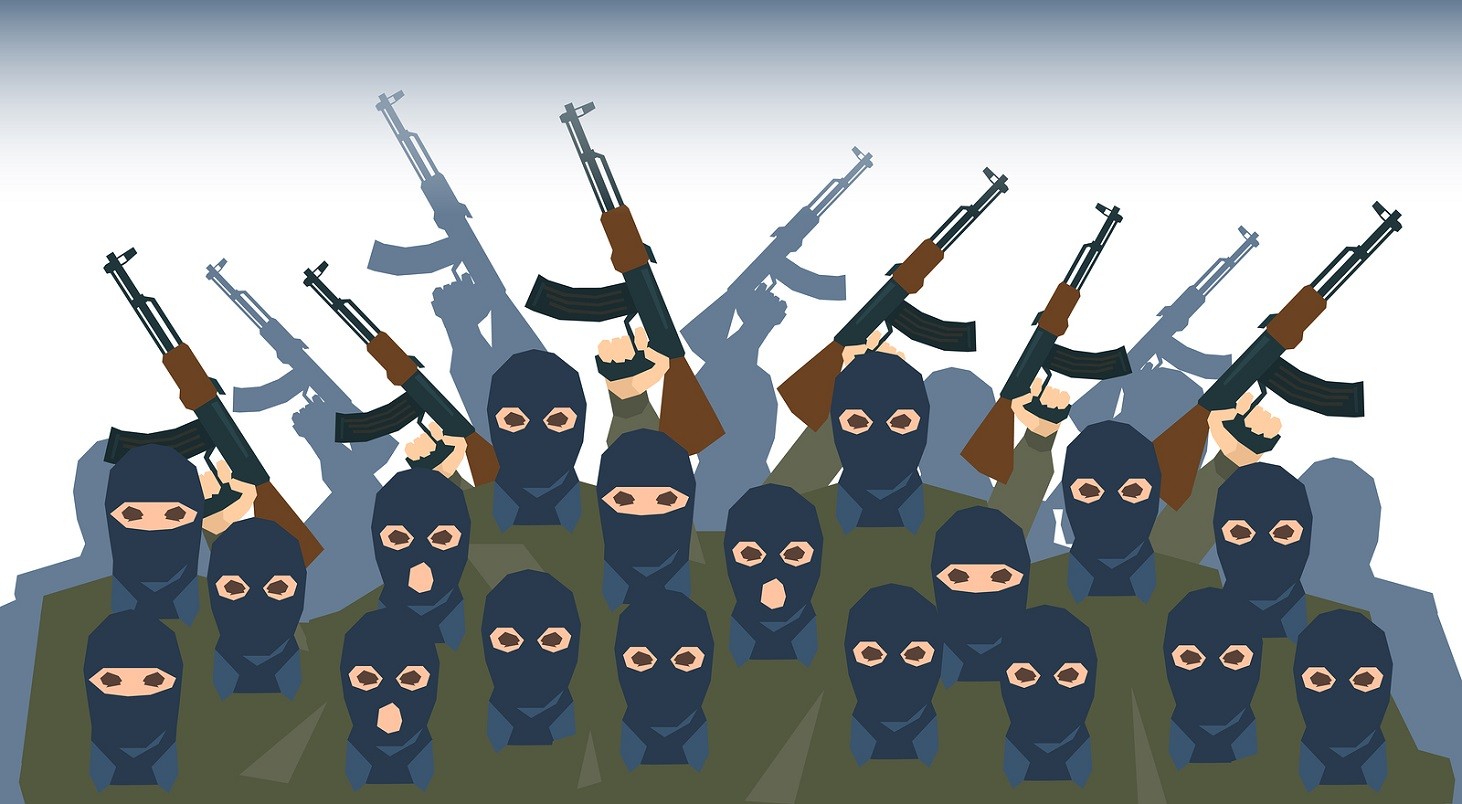
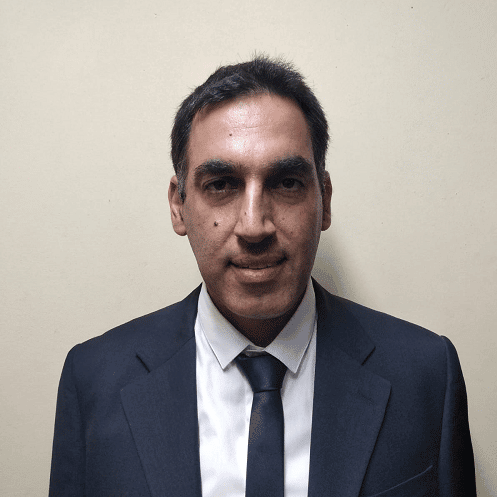
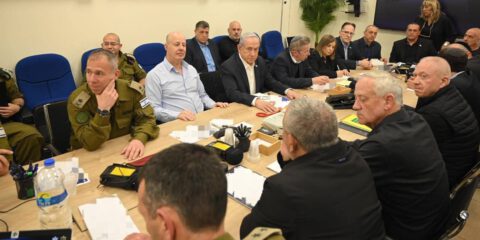

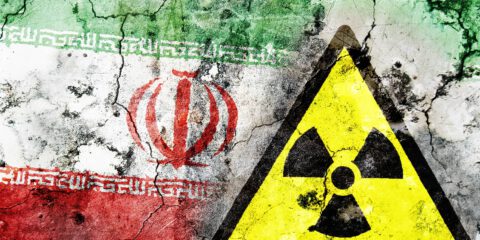

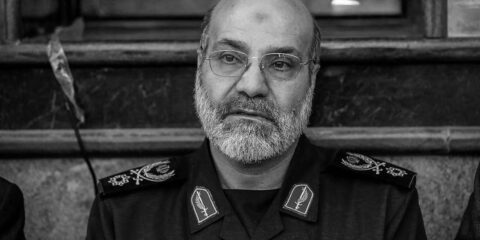

 - בניית אתרים
- בניית אתרים